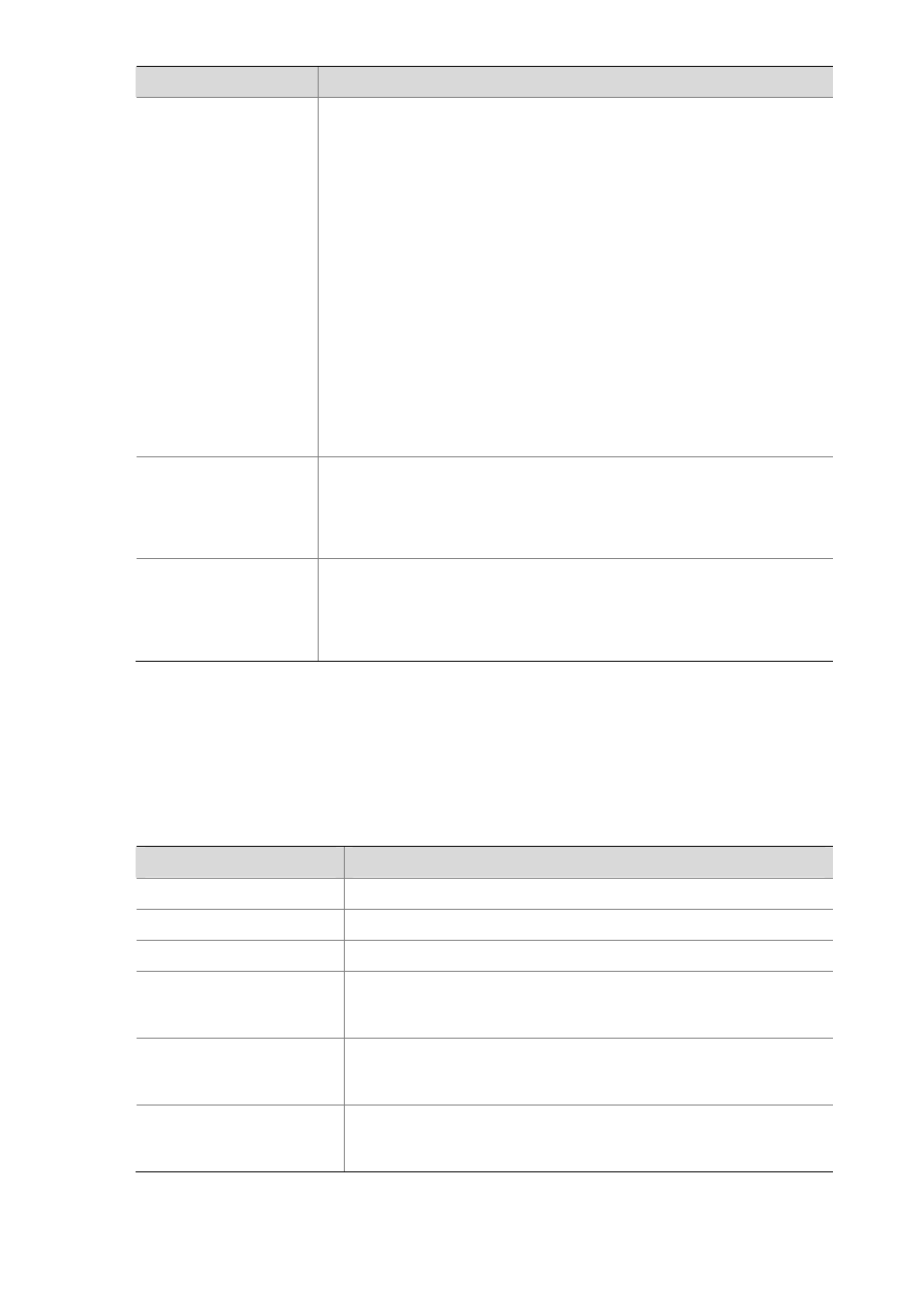Dldp status – H3C Technologies H3C S3100 Series Switches User Manual
Page 193

1-4
DLDP packet type
Function
LinkDown
Linkdown packets are used to notify unidirectional link emergencies (a
unidirectional link emergency occurs when the local port is down and the
peer port is up). Linkdown packets carry only the local port information
instead of the neighbor information. In some conditions, a port is
considered to be physically down if the link connecting to the port is
physically abnormal (for example, the Rx line of the fiber on the port is
disconnected, while the Tx line operates properly). But for the peer end,
as Rx signals can still be received on the physical layer, the port is still
considered to be normal. Such a situation is known as unidirectional link
emergency.
When a unidirectional link emergency occurs, DLDP sends linkdown
packets immediately to inform the peer of the link abnormality. Without
linkdown packets, the peer can detect the link abnormality only after a
period when the corresponding neighbor information maintained on the
neighbor device ages out, which is three times the advertisement interval.
Upon receiving a linkdown packet, if the peer end operates in the
enhanced mode, it enters the disable state, and sets the receiving port to
the DLDP down state (auto shutdown mode) or gives an alarm to the user
(manual shutdown mode).
Recover Probe
Recover probe packets are used to detect whether a link recovers to
implement the port auto-recovery mechanism. Recover probe packets
carry only the local port information instead of the neighbor information.
They request for recover echo packets as the response. A port in the
DLDP down state sends a recover probe packet every two seconds.
Recover Echo
Recover echo packets are response to recover probe packets in the port
auto-recovery mechanism. A link is considered to restore to the
bidirectional state if a port on one end sends a recover probe packet,
receives a recover echo packet, and the neighbor information contained
in the recover echo packet is consistent with that of the local port.
DLDP Status
A link can be in one of these DLDP states: initial, inactive, active, advertisement, probe, disable, and
delaydown.
Table 1-2 DLDP status
Status
Description
Initial
Initial status before DLDP is enabled.
Inactive
DLDP is enabled but the corresponding link is down
Active
DLDP is enabled, and the link is up or an neighbor entry is cleared
Advertisement
All neighbors communicate normally in both directions, or DLDP
remains in active state for more than five seconds and enters this
status. It is a stable state where no unidirectional link is found
Probe
DHCP sends packets to check whether the link is a unidirectional. It
enables the probe sending timer and an echo waiting timer for each
target neighbor.
Disable
DLDP detects a unidirectional link, or finds (in enhanced mode) that a
neighbor disappears. In this case, DLDP sends and receives only
recover probe packets and recover echo packets.